Gunnel Hag has always seen the world through a creative lens. From painting tiles as a child to running a thriving textile studio, she’s built a career full of color, texture, and fearless exploration. Her love of screen printing and nature shines through in every piece she creates.
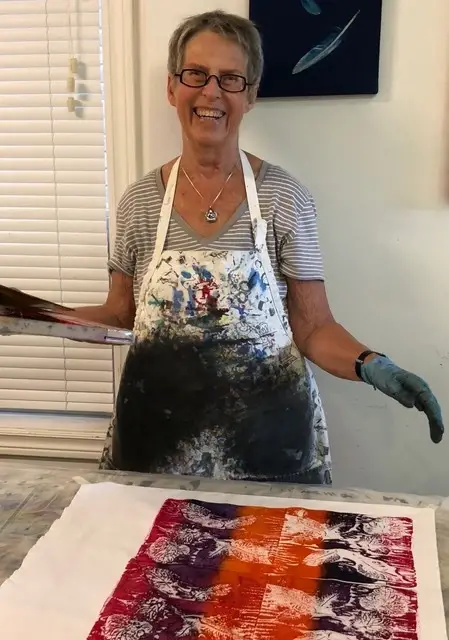
Let’s start at the beginning. When did you first realize you are a creative person?
I have always known that I was creative. I didn’t think there was any other way to be.
My parents supplied me with crayons and paints from an early age. – my dad gave me oil paints and ceramic tiles to paint on. We were always doing some project or other in my family.
I failed art in junior high school, not because I lacked talent, but rather because I didn’t follow rules well and was probably just too rambunctious.
As an Amazon Associate I earn from qualifying purchases. Read more about our affiliate linking policy.
What first drew you to textile printing and surface design?
I studied English at Stockholm University, and started taking textile classes in adult education programs at night – Weaving, Batik, and Textile Printing. I was very fortunate to have the wonderful Richard Kunzl as my instructor in Screen Printing on Fabric.
Ever since then, screen printing has been my true and enduring love among all the various textile techniques I have learned and also taught over the years.
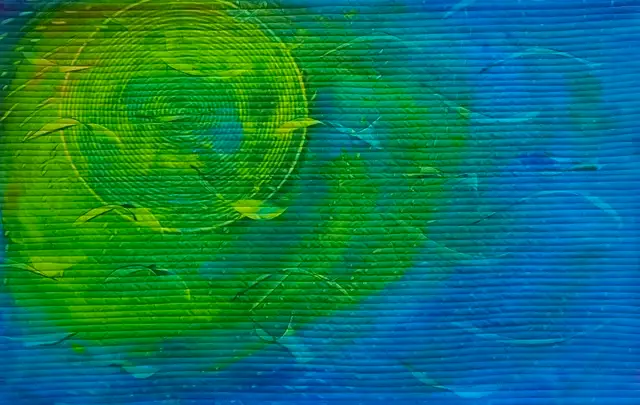
You studied textiles in Stockholm and London. How did those experiences shape your artistic sensibilities?
I have always been drawn to very spare and simple designs. Often abstract, but always bold. At art college in London, England I became obsessed with repeated designs. In those days they were all done by hand, and I still love that aspect of textile design. The motifs that have been repeated by hand have a more personal feel than all the digital designs you see so much of now.

Can you tell us about launching Trees Textile Designers and Printers in Toronto? What inspired your entrepreneurial leap?
After finishing our studies in London, my then husband and I immigrated to Canada. I had already sold some of my textile designs to fabric printing companies in both London and Stockholm.
However, when we arrived in Toronto, there simply was not much of a fabric printing industry here, so I started tie-dyeing T-shirts and selling them in local boutiques and trendy clothing stores. It then seemed like a logical step to start a Fabric Screen Printing business. I started by printing T-shirts, and then proceeded to yardage and banners.
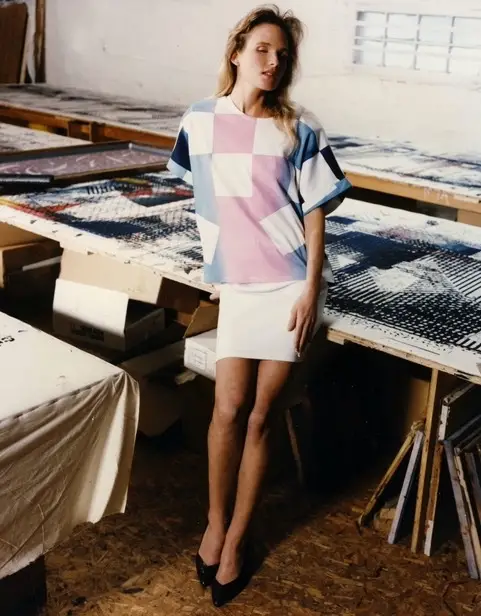
I also designed and printed a line of kitchen textiles – aprons, oven mitts, place mats, and so on. My business took off when I started my printed fashion line. In the studio, we printed my own yardages and artwork, as well as custom prints. A large part of the business was corporate scarves and ties. I loved creating fashionable scarves and ties for government, businesses, educational institutions, etc. Before I came along, their scarves and ties were very conventional and boring.
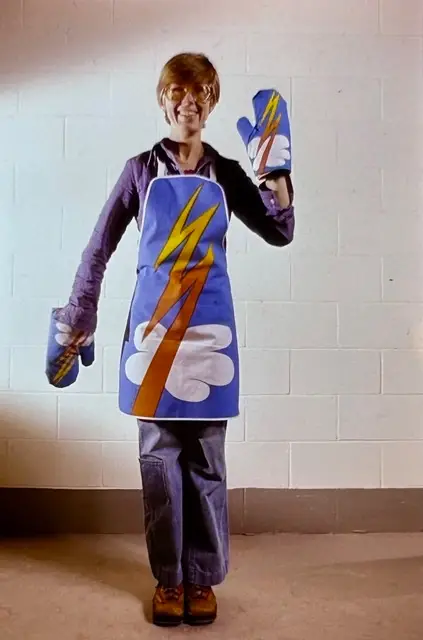
What memorable projects from that time stand out to you?
I loved the fashion side of my printing business.
The Toronto Harbourfront Centre encouraged new and original designers and artists, and a group of us started putting on Fashion Shows there. The fashion shows eventually grew into pretty involved productions, and became a “must-see” event in Toronto. It was a fabulous experience, and we drew fairly large crowds.
Did working on big theatrical projects like The Lion King or West Side Story push or influence your designs?
I think anything you do and experience influences you and your artistic path.
A big international production like The Lion King had very strict rules about the designs. Actually most of the movies, theatre and TV shows I worked on did not allow for a lot of individual creativity. That creativity had to come out in my own work.
When I think back on those days, I’m quite amazed at the amount of work I did. My largest studio was 8,000 sq ft, with two 30-yard print tables. I employed an assistant, printers, sewers, and sales reps. I was also teaching part-time at an art college, and sometimes I would go into the dye studio at night and airbrush fabric for costumes for The Lion King. That way, any fugitive dye wouldn’t interfere with other projects. It was a crazy and exciting time!
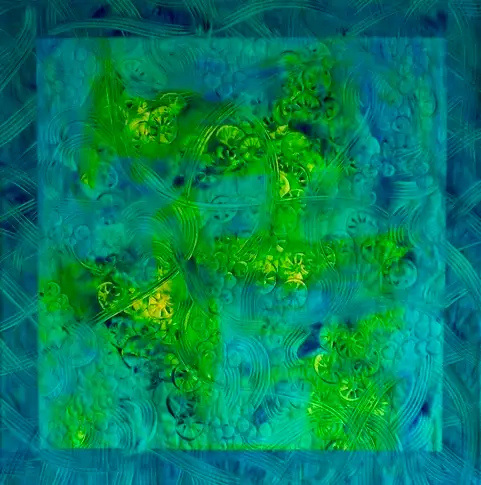
Describe your creative space.
My present studio is in my house.
I knocked down all the walls on the main floor, so I could fit in a 6-meter print table. This table is where I do most of my work these days.
The print table is also where I teach live workshops, although ever since COVID I mostly teach online, and also give live online lectures to guilds, conferences, and art colleges.
Tell us more about making time for experimentation and play in your studio.
Sadly there is never enough time for experimentation and play in the studio.
Sometimes I put a day aside to have fun and try out new things. Other times the experiments have to happen over a period of days, so I can set up in the morning and continue the next day.
I am a member of Connections Fibre Artists, and apart from exhibiting our work as a group, we also organize “play days”.
What is one tool or material you couldn’t create without?
I absolutely need pigments, a screen and squeegee and foam brushes.
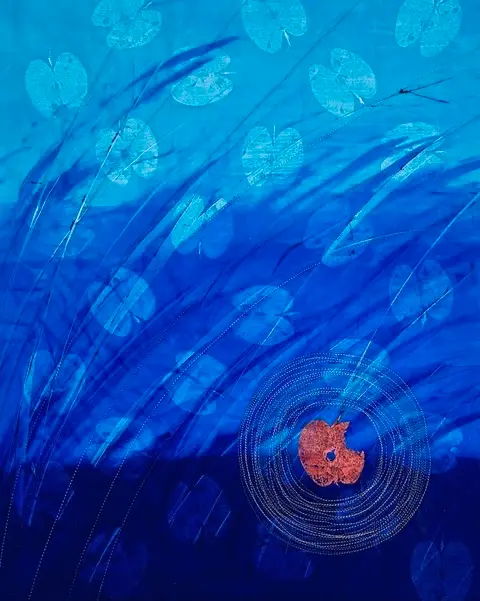
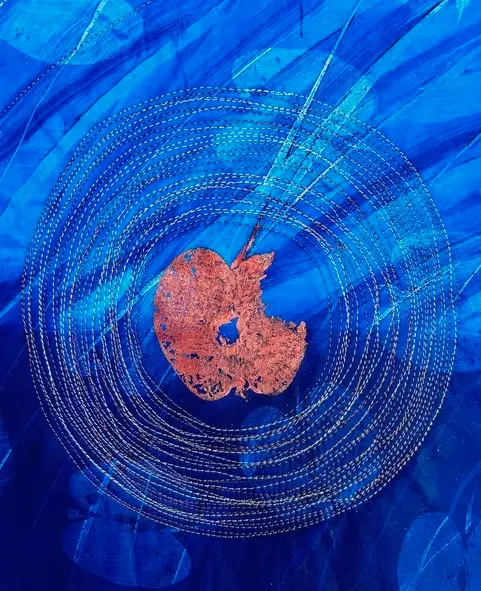
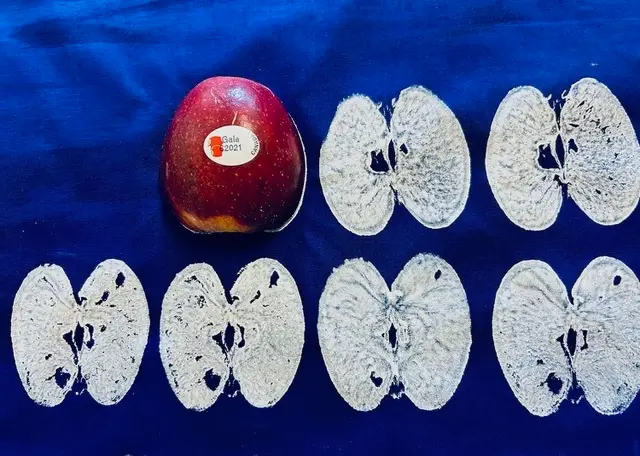
Can you walk us through the creation of one of your art quilts? From print to quilt?
In my most recent art quilt: “An Apple a Day….” I started with plain white cotton, cut an apple in half and used it to print opaque white pigment on the white fabric.
I then over-painted the printed cloth with a gradation of Blue pigments, which I manipulated while they were still wet. Finally, I couldn’t resist taking a bite from the apple before printing one last pinky/red shiny apple.
Before machine quilting, I drew the stitch lines that I wanted to sew onto paper. This way ,I get a feel for the lines before I start sewing. For this piece ,I wanted to emulate the windswept feeling with my over-painting/manipulation of the pigments, as well as make the red apple stand out.
Nature is my happy place, where I find peace, solace and inspiration. “An Apple a Day” is my ode to Health and Happiness. It’s part of BLUE, an exhibition with Connections Fibre Artists.
You introduced a water-based pigment system, Colour Vie, for heath and safety. What prompted its development?
When I first started printing with pigments, the Base that was available contained Varsol, to which I became severely allergic. The development of a water-based pigment system meant that I could continue doing what I love to do most – printing and painting on cloth.
Has your visual approach evolved over time? From texture density to color palettes?
I think as human beings we can’t help but change and hopefully evolve.
While my designs still have a strong feeling of simplicity, they now include a lot more visual texture and depth than when I first started out.
I now also use photographs and photographic imagery in my Art Quilts.

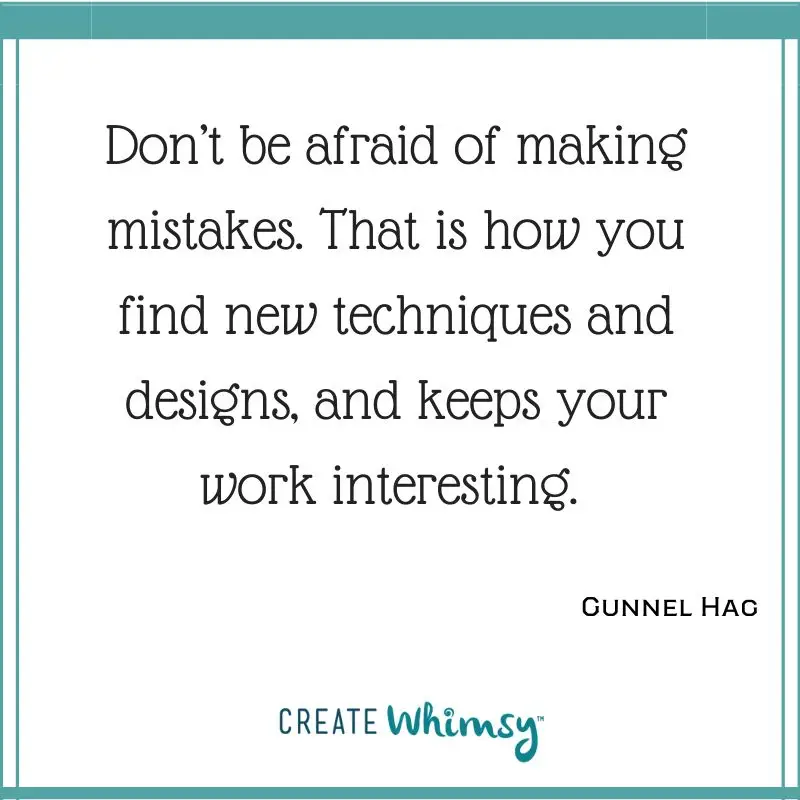
What advice would you give to someone just starting in surface design or textile printing?
Don’t be afraid of making mistakes. That is how you find new techniques and designs, and keeps your work interesting.
How do you stay motivated during creative slumps?
Sometimes I simply get to work on some fairly mundane tasks. There always seems to be a lot of those around (like book keeping and cleaning:).
And sometimes I decide to take a break, and then come back, usually rested, and hopefully with new ideas and inspiration.
At other times, I have to knuckle down and just get to it, because deadlines are looming.
Where can people see your work?
On my website: www.gunnelhagstudio.com
Instagram: www.instagram.com/gunnelhag123
My online lectures and workshops are listed on my website.
Interview posted October 2025
Browse through more inspiring surface design projects and inspiration on Create Whimsy.
